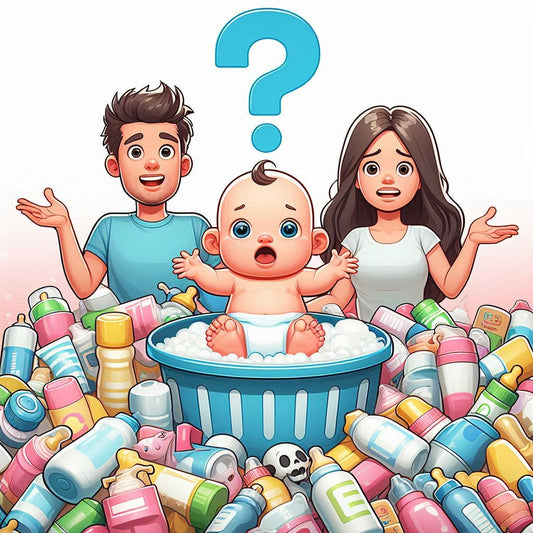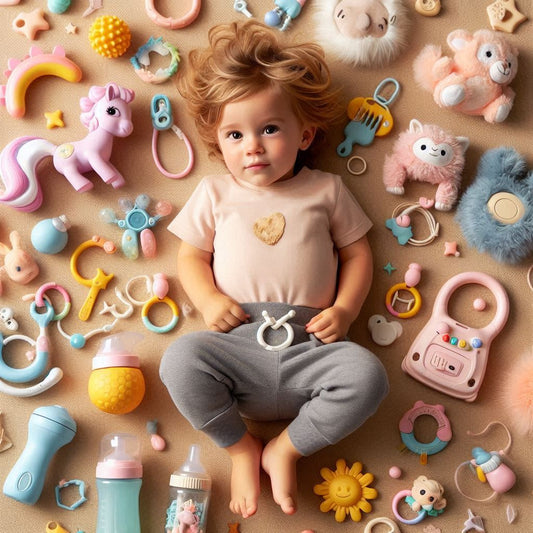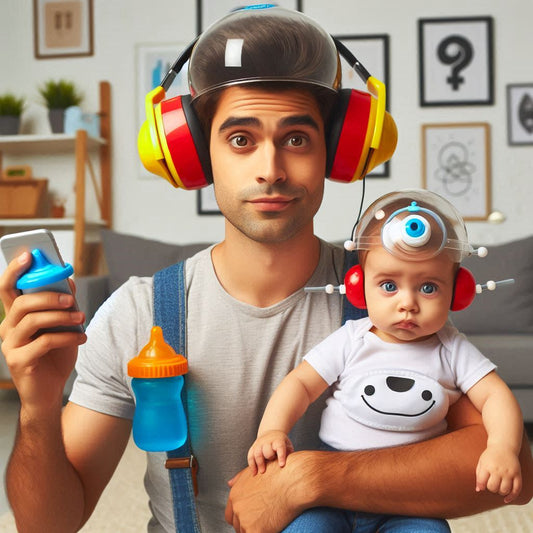Top Eco-Friendly Car Seat Bases Buying Guide 2025 – Safe, Sustainable, and Smart Picks for Modern Parents
Kin BuBShare
As sustainability becomes a core value for modern families, eco-conscious parenting choices are no longer just a trend—they’re a responsibility. While many parents have embraced organic baby clothes and biodegradable diapers, there’s one essential piece of baby gear that’s often overlooked in the sustainability conversation: the car seat base.A car seat base is the anchor of every infant travel system, offering safety, convenience, and peace of mind. But in 2025, parents are asking more: Is it eco-friendly?This eco-friendly car seat bases buying guide 2025 explores the newest sustainable innovations, material choices, certifications, and environmental practices shaping the industry. It’s designed to help you choose a product that protects both your child—and the planet.
Table of content
- 1. 🌿 Why Eco-Friendly Car Seat Bases Matter in 2025
- 2. 🧠 What to Look for in an Eco-Friendly Car Seat Base
- 3. 🏆 Top Features of the Best Eco-Friendly Car Seat Bases (2025)
- 4. 🌍 Sustainable Brands Leading the Way
- 5. 🔄 End-of-Life Considerations
- 6. 💡 Tips for Parents Choosing a Sustainable Car Seat Base
- 7. 🙋 FAQs: Eco-Friendly Car Seat Bases Buying Guide 2025
- 8. 📌 Conclusion: Safety, Sustainability, and Smart Choices
🌿 Why Eco-Friendly Car Seat Bases Matter in 2025
Every year, millions of baby gear products end up in landfills. Car seats and bases, made from hard plastics, foams, and synthetic textiles, are among the least biodegradable baby products. Traditional bases:
- Use petroleum-based plastics
- Are hard to recycle due to mixed materials
- Often lack end-of-life disposal options
Eco-conscious car seat bases in 2025 now feature:
- Recycled or recyclable plastics
- Plant-based polymers
- Modular designs for extended use
- Low-emission manufacturing processes
- Minimal, compostable packaging
🧠 What to Look for in an Eco-Friendly Car Seat Base
When shopping for a sustainable car seat base, keep the following criteria in mind:
1. Materials
Look for bases made with:
- Recycled plastic (e.g., polypropylene or HDPE)
- Bio-based materials (e.g., soy foam, sugarcane polymers)
- Flame-retardant-free foams and fabrics
Check for labels like:
- OEKO-TEX® certification
- GREENGUARD Gold Certification (low VOC emissions)
2. Modularity and Longevity
Eco-consciousness also means buying less. Choose bases that:
- Work with multiple car seat models or stages
- Have extended-use lifespans
- Convert or adapt as your baby grows
3. Recyclability and Take-Back Programs
Some brands now offer:
- Recycling instructions
- Take-back programs to reclaim materials
- Partnerships with baby gear recycling services
4. Ethical and Low-Emission Manufacturing
Brands making an impact often:
- Use solar-powered or offset energy facilities
- Prioritize ethical labor practices
- Share full supply chain transparency
5. Sustainable Packaging
Look for packaging that is:
- Plastic-free or minimal use of plastic
- Made from recycled cardboard
- Printed with soy or water-based inks
🏆 Top Features of the Best Eco-Friendly Car Seat Bases (2025)
| Feature | Benefit |
| Recyclable Shell | Reduces landfill waste post-use |
| Universal Fit Design | Minimizes need to buy multiple bases |
| Flame Retardant-Free Foam | Safer for baby and environment |
| Lightweight Construction | Reduces shipping emissions |
| Built-in LATCH System | Enhances safety and ease of use |
| Manufacturer Recycling Program | Closes the sustainability loop |
🌍 Sustainable Brands Leading the Way
While we don’t link to product pages, several brands have publicly shared sustainability commitments in their manufacturing and design of car seat systems. Look for companies that:
- Highlight carbon-neutral goals
- Use certified green factories
- Participate in product recycling partnerships or nonprofit donations
Always refer to third-party guides like:
🔄 End-of-Life Considerations
Most car seat bases have a lifespan of 6–10 years. Don’t forget to ask:
- Can I recycle this through a municipal program?
- Does the brand offer a return or take-back?
- Is it labeled with material codes for proper sorting?
2025 also sees an increase in modular reuse programs, where parts like belts or shell pieces are refurbished and reused.
💡 Tips for Parents Choosing a Sustainable Car Seat Base
- Don’t compromise safety for sustainability. Eco features must complement tested crash performance.
- Think long-term. Modular systems reduce your environmental impact.
- Consider local availability. Choosing locally manufactured bases reduces carbon from shipping.
- Pair your eco base with an eco seat. Look for full travel systems designed with green practices.
🙋 FAQs: Eco-Friendly Car Seat Bases Buying Guide 2025
1. Are eco-friendly car seat bases as safe as standard ones?
Yes, as long as they meet or exceed FMVSS 213 safety standards. Sustainability should never replace safety certification.2. What is the most sustainable car seat base material?
Recycled HDPE or polypropylene plastics, followed by bio-resins and certified low-VOC foams.3. How can I dispose of a car seat base sustainably?
Use manufacturer take-back programs, local baby gear recycling centers, or nonprofit donation programs (if the product is within expiration).4. Do flame-retardant-free bases pose safety risks?
No. Many eco-friendly bases use natural fire-resistant barriers like wool or safer alternatives tested for performance.5. Are there any eco car seat base subscriptions?
Yes! Some 2025 brands offer subscription-based baby gear where seats and bases are swapped, cleaned, and reused—reducing waste significantly.6. What is the most important feature to prioritize?
Certified safety + recyclability. If a base is crash-tested and recyclable or long-lasting, it’s a solid sustainable choice.
📌 Conclusion: Safety, Sustainability, and Smart Choices
The journey to parenthood is filled with decisions—and now, many families are choosing to raise their children with sustainability in mind. By choosing an eco-friendly car seat base, you’re not only ensuring your baby’s safety but also contributing to a healthier planet for their future.As we enter 2025, let’s move beyond convenience and prioritize products that protect both children and the world they’ll grow up in. Because every conscious choice counts.
📝 Reference Link:
👉 Greenguard Certification Standards – UL – for safety and chemical emission testing
👉 HealthyChildren.org – AAP Environmental Safety Resources




